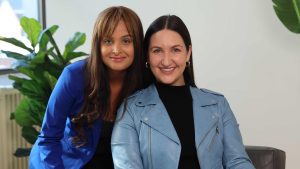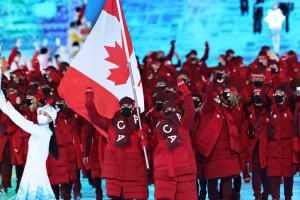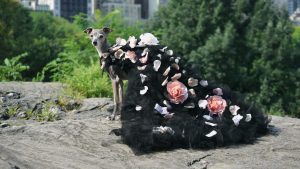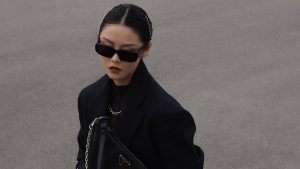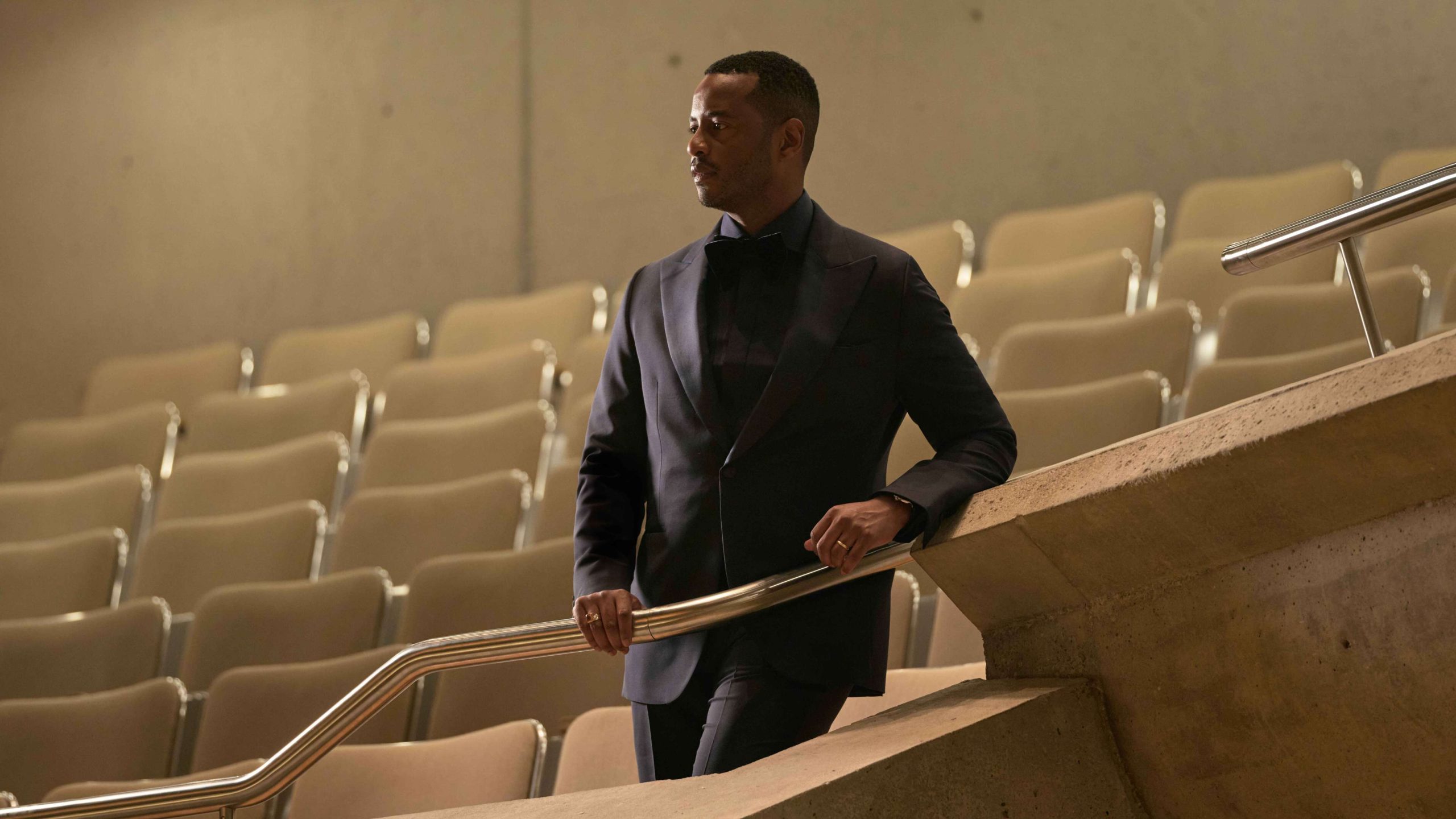Jonathan Van Ness has made a name for themself as the joyous co-host and beauty expert for the popular Netflix series Queer Eye. Since becoming one of the world’s most influential hairdressers, Van Ness has expanded their activist reach and entertainment talents to create a media empire. Van Ness (who is gender non-binary and uses “he” “she” or “they” pronouns) has two New York Times best-selling books, popular stand-up comedy tours, a successful podcast-turned-Netflix spinoff, Getting Curious with Jonathan Van Ness, and has now begun their own haircare brand in 2021, JVN Hair.
Working and living out of Los Angeles and New York City, the entrepreneur was in Toronto this spring to promote JVN Hair, a brand working to shift the focus from hair type to prioritizing their star ingredient, hemisqualane. Van Ness’ brand champions inclusivity, sustainability, and fostering freedom of expression.
Van Ness sat down with Bay Street Bull’s Lance Chung to discuss their brand, the story behind it, problems facing the LGBTQ+ community, and why despite all of this, finding joy remains a powerful statement.
Jonathan Van Ness on Freedom of Expression
“Part of what is so incredible and unifying about hair is its relationship to self-expression and everyone has a relationship to hair or lack of hair. Growing up being assigned male at birth, […] wanting to mix glitter with gel and braid my hair, […] I was made to feel bad for wanting that. I remember my stepdad barging in on me getting ready and [saying], ‘Enough of this primping get out of the bathroom, you’re a boy you aren’t meant to be doing this.’ I wanted to wear different outfits or dresses that my girl cousins would have. […] I don’t want anyone to feel weird for wanting to express themselves. I want people to have the hair they want. [JVN Hair’s ethos is]: ‘Come as you are,’ because I want to celebrate everyone as they are. No matter age, race, or gender, we are here for you. You are allowed to feel glamorous, to investigate your hair as a form of self-expression.”
Jonathan Van Ness on What Pride Means to Them
“I think about the people who came before me to make Pride possible. Pride to me means to protest, it literally was to protest police brutality, which is why I have BLM in my bio on Instagram. It’s why I talk to my family about it and have a chapter in my book about systemic racism, mass incarceration, and white supremacy. White people need to realize that the existence of white supremacy and its cancerous effects in the United States is still present. It’s important to connect that to our history. It makes me feel hopeful because I see how far we have come. We have much more work to do and we are regressing in certain areas. Progress is worth celebrating, but it’s important to keep having difficult conversations so we can make progress for more people.”
Jonathan Van Ness on Struggles in the LGBTQ+ Community Today
“In a time where trans and gender non-conforming people can be on a platform like Netflix, and, me for example, can have two New York Times best-selling books, this house, I’m able to get married and a beautiful life that I am very proud [and grateful for]. I have trans and gender non-conforming friends who are more visible than ever and more open, but at the same time, we have states who have villainized gender-affirming health care and trans people. We have the ‘Don’t Say the Gay’ bill in Florida where teachers can’t talk to kids about […] if they are from a same-sex relationship because they can get fired. There is misinformation, fear-mongering, and terror that is befalling trans people. It’s confusing to be thriving and experiencing success when you see so many others […] who could be whatever they want to be, and they can’t go to school, they aren’t safe, they can’t get health care. What type of people are we missing out on because of these insane anti-trans laws? There is progress and at the same time so much regression.”
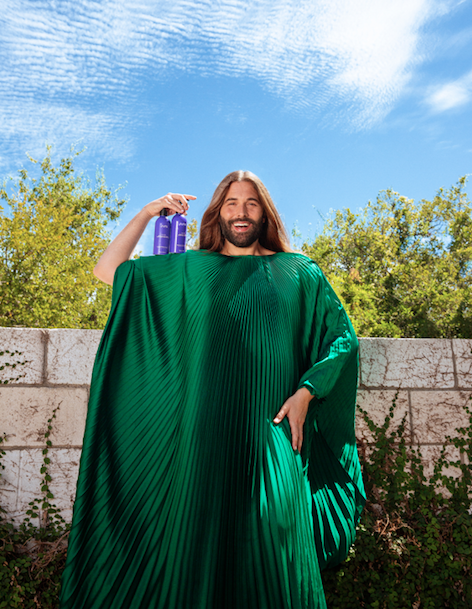

Jonathan Van Ness on Using Your Platform
“Social media and using your platform are important no matter [the] size. Silence is not the answer. You can do it [on social media] but also in your life. Talk to family members and friends who aren’t on social media, you can reach out. There are organizations that will help to facilitate that like Sister District or Peoples Action network. Someone might say I don’t have a big platform, but if you move three people of your 300, if you change a couple of people’s minds, that moves mountains. Small votes matter, and [it grows our] collective voice.”
Jonathan Van Ness on His Mission Statement
“My mission is to promote self-acceptance and love by modelling joy and compassion. […] As I realized how big my platform was and how many people my work and our show were touching […], I wanted to be more authentic and share more. That’s why I shared about my HIV status, […]. It’s about sharing where you’ve been – if you feel safe to do so. In the beginning, I wasn’t aware of how much suffering there was. […] Our community is going through so much and I want people to get in on this fight. That means hiring [and being an advocate for] gender non-conforming people and trans people. It looks like not letting others say transphobic stuff even […] in private. It means being an ally, showing up to vote, and educating yourself on local politics.”
“Joy can come from trying new things or old things. Gymnastics, my cats, or gardening are things I experience massive daily joy in. We think of joy as existential, earth-shattering, and I think [that’s] why I’m so happy all the time – I survived meth addiction. I am happy to take a deep breath and not have a craving for drugs. […] People ask me what it’s like to be famous – honey, it’s like a constant state of shock, I can’t believe my luck. Even before Queer Eye in my early recovery, I would have those feelings of being so glad I am here. It’s the smaller joys. It’s being present really. […] When you compare it to a drug or a new love, it isn’t like the same smack-you-in-the-face, endorphin rush joy – it’s a subtle joy, and it’s important to bring those more subtle joys into your life.”



